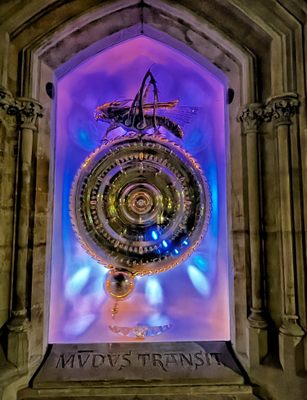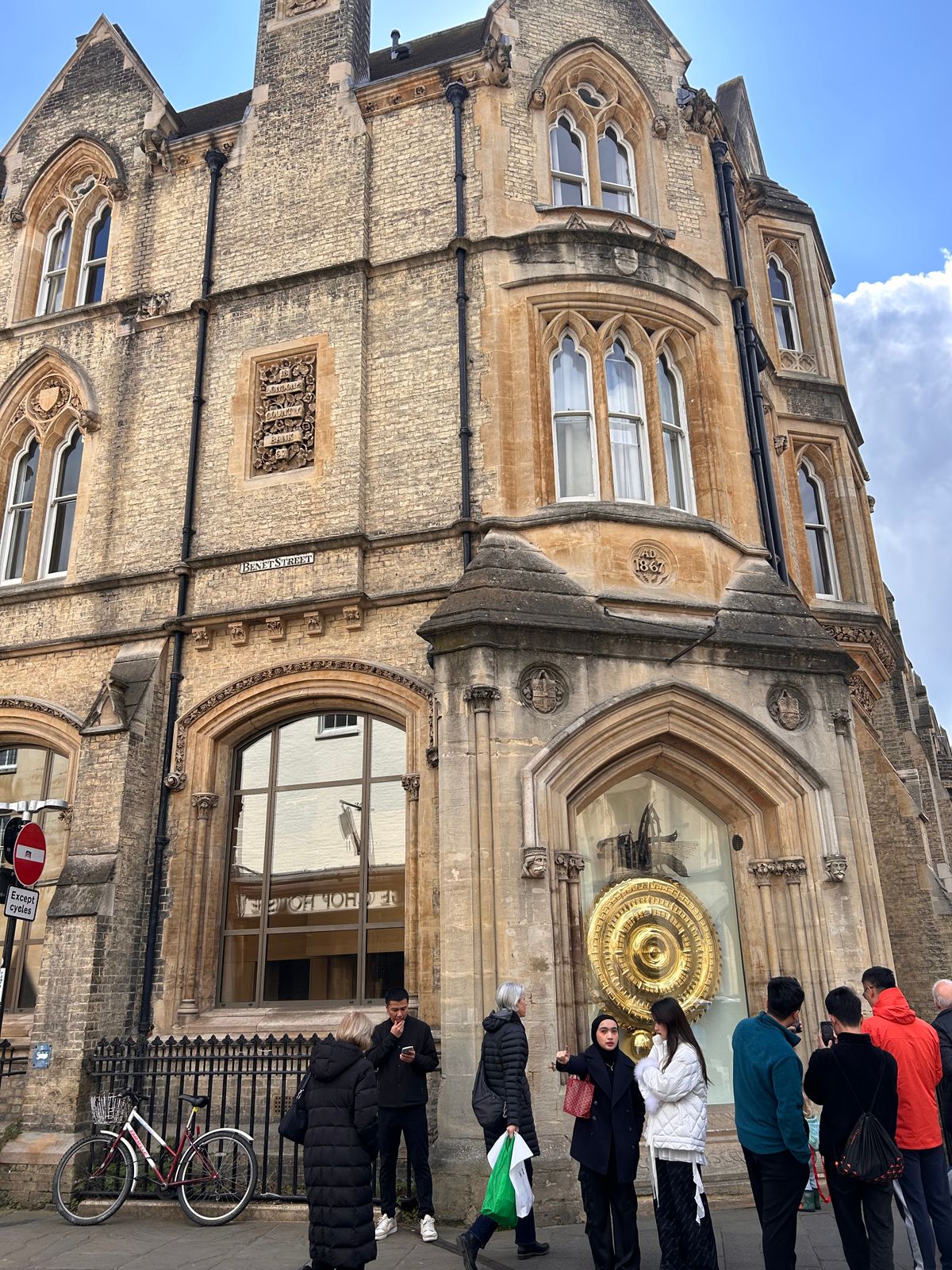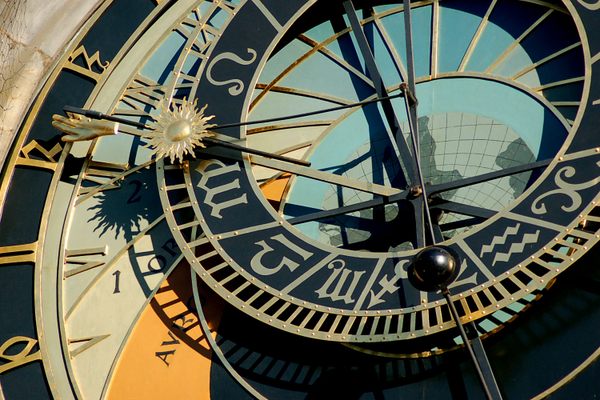About
The cryptic click-click-clicking of the corpus clock comes primarily from its disquieting locust escapement, grinding away the hours as its gaping mouth moves in the effort to live up to the sinister title of "Chronophage", meaning “time eater” in Greek.
The conceptually simple yet mechanically brilliant brainchild of John C. Taylor, the Corpus Clock resides at his alma mater, Corpus Christi College, a constituent of Cambridge University. It was officially unveiled in 2008 by physicist Stephen Hawking, and has since been featured in films and won the title of Time's Best Inventions.
While not always accurate, Taylor insists that neither is life - the pendulum sometimes sticks or even stops, the LED lights that represent the non-existent hands and numbers tend to lag and then hurry to catch up, the locust occasionally “blinks” as it devours time in a manner that is intentionally terrifying.
The nightmarish grasshopper escapement sits atop a 4.9 ft. gold-plated, stainless steel face. Absent of numbers, the hours, minutes and seconds are demonstrated by blue LED lights which are revealed by opening slits in three concentric rings. Interpreting time as a work of public art, not necessarily a precise instrument, the Chronophage is a low-friction mechanism that converts pendulum motion into rotational motion. An homage to John Harrison, the 18th century clockmaker who invented the mechanism, the Corpus Clock is basically a rendition of a traditional mechanical clock turned inside out and exposed to show its inner workings.
Quoting the Vulgate 1 John 2:17, an inscription below the Corpus Clock and its voracious time eater reads “mundus transit et concupiscentia eius” - “the world passeth away, and the lust thereof”, and the Chronophage grinds and clicks away, ravaging seconds we will never recover.
Related Tags
Community Contributors
Added By
Published
December 31, 2013



























































